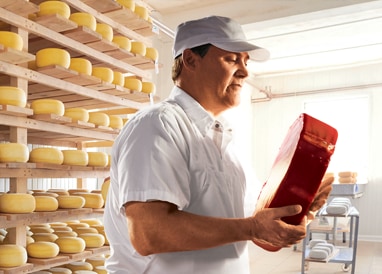Behind the Scenes with Cheese Makers Melbourne: Featuring Floridia Cheese
Wiki Article
Unlocking the Keys of Artisanal Cheese Making: A Step-by-Step DIY Overview
In the world of cooking workmanship, artisanal cheese making stands as a testimony to the fragile balance in between custom and innovation. As we embark on this journey to debunk the art of creating exquisite cheeses, we are faced with a tapestry of skills and keys waiting to be deciphered.Selecting the Right Milk
When getting started on the journey of artisanal cheese making, the choice of milk plays a critical function in identifying the quality and attributes of the last item. The kind of milk selected affects the flavor, appearance, and generally profile of the cheese.When picking milk for cheese making, it is very important to consider the fat material. Greater fat content in milk can cause a creamier and richer cheese, while lower fat material might lead to a drier and stronger texture. Furthermore, the resource of the milk, whether from cows, goats, sheep, or buffalo, contributes distinctive flavors and characteristics to the cheese (Melbourne Made Cheese). Each kind of milk brings its very own subtleties, allowing for a vast array of cheese varieties to be crafted based upon the chosen milk. Eventually, the option of milk is a fundamental decision that establishes the structure for a successful artisanal cheese-making venture.
Culturing and Coagulating
To launch the cheese-making procedure, the vital actions of culturing and coagulating need to be very carefully performed to transform milk into curds and whey. The kind of society made use of can substantially affect the flavor, texture, and ripening of the last cheese item.

The timing and temperature level control throughout culturing and coagulation are crucial factors that affect the final end result of the cheese. Proper implementation of these steps is crucial to make certain the wanted appearance, flavor, and uniformity of the artisanal cheese being produced.
Draining Pipes and Pressing Curds
After the milk healthy proteins have coagulated and the curds have actually been cut to launch whey, the next crucial action in artisanal cheese making entails draining and pushing the curds to accomplish the wanted texture and uniformity of the final cheese item. Draining is the procedure of separating the curds from the whey. This can be done by transferring the curds right into a cheesecloth-lined colander or mold and mildew and permitting the whey to drain pipes off naturally. The moment for draining pipes can vary relying on the type of cheese being made and the preferred dampness material.Pushing helps remove any type of staying whey and compacts the curds to create a strong cheese wheel. Proper pressing and draining are critical steps that considerably influence the top quality and features of the artisanal cheese being generated.
Aging and Flavor Methods
Applying careful aging and flavoring techniques is pivotal in boosting the depth and complexity of artisanal cheeses, raising their preference accounts to elegant levels of improvement and refinement. Aging plays a critical role in developing the distinct flavors and structures that distinguish artisanal cheeses.Seasoning strategies also contribute dramatically to the final taste of artisanal cheeses. Cheesemakers might choose to introduce additional flavors by including components such as herbs, spices, or perhaps fruits into celebrity during the production procedure. Furthermore, some cheeses are cleaned or massaged with different liquids, such as brine or alcohol, to boost their appearances and flavors.
Covering and Keeping Cheeses

Final Thought
In final thought, understanding the art of artisanal cheese making entails very carefully picking the appropriate milk, following specific culturing and coagulating processes, draining and pressing curds properly, and using different aging and flavoring techniques. Remember to cover try these out and keep your cheeses correctly to make certain optimum taste and structure advancement.Each kind of milk brings its own subtleties, enabling for a broad variety of cheese ranges to be crafted based on the selected milk.After the milk healthy proteins have coagulated and the curds recommended you read have actually been reduced to launch whey, the following important action in artisanal cheese making entails draining pipes and pressing the curds to accomplish the desired structure and consistency of the last cheese item. Many cheeses need to be wrapped in wax paper or cheese paper to enable them to breathe while securing them from drying out. For cheeses that need to continue aging, such as bloomy rinds or washed skins, ensure they are saved in an amazing atmosphere like a cheese cavern or a refrigerator set to the appropriate temperature level. By paying attention to the covering and storage of artisanal cheeses, cheese manufacturers and enthusiasts can protect the integrity of these specials and fully appreciate their complicated flavors.
Report this wiki page